January Newsletter 2016
 Special Holiday Hours
Special Holiday Hours
Paso Robles Sports Club will be open New Year’s Eve 6 am to 5 pm and New Year’s Day from 10 am to 4 pm. We hope you take advantage of the Club on the first day of the year!New Year, New Guest Waivers!
2016 is here! We encourage you to bring in your guests to enjoy the club with you all year long, starting with the New Year! Please make sure that all of your guests come in sign the new 2016 waivers. This is especially important for any junior guest (under the age of 18). We need the child’s parent to fill out and sign the waiver for the New Year. We also have the option to go to our website and take care of the waiver online at www.pasoroblesclub.com.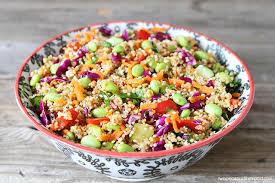 New Healthy Cafe Item!
New Healthy Cafe Item!
Look out for our weekly Quinoa and Pasta Salads! These are great for post work out meals since they are balanced with carbohydrates, fats, and protein! Yum!Keep an eye out for the arrival of additional new Cafe menu items
Save the Date!
PRSC New Year Open House! --Saturday, January 30th 10am-3pm--FREE GUESTS all dayBBQ 12pm--Group Workouts--Beer Tasting--FUN TIMESNew Year, New You!
New Year’s resolutions often drive us to get back to our regular workouts, tighten up our diets and simply get into a better routine. The Paso Robles Sports Club is the place to do this! Take advantage of our instructors, our classes and our healthy Cafe menu!Refer a friend, and receive a $50 credit to your account!!Winners of the Turkey Trot & 18 pound Turkeys!
Congratulations to our winners of the Men’s’ and Women’s’ Doubles! The action was hot and the mimosas were great! Thank you for all that participated!
Men’s Doubles: Chaz and Charles Darrow
Women’s Doubles: Jan Leitner and Kim Laderriere
January Billing Note:
Billing will occur on Monday, the 4th of January due to the holiday.
PRSC AQUATICS

AROUND THE POOL: New Year’s Resolutions
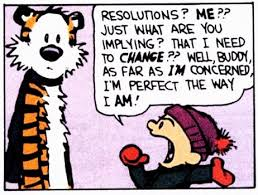 Hard to believe we are closing the doors to 2015 and opening up the doors to the hopes and possibilities of 2016 already!! I checked in to see what some of our PRSC folks held as New Year’s hopes and resolutions. Here’s some of what we heard:
Hard to believe we are closing the doors to 2015 and opening up the doors to the hopes and possibilities of 2016 already!! I checked in to see what some of our PRSC folks held as New Year’s hopes and resolutions. Here’s some of what we heard:
Lucy Titchin, Swim Instructor and Coach of PUMA Swim Team: “To run at least 3 times a week because I’d like to run a marathon next year!”
Jodi McDowell, Aquatics Director: “This year I aspire to improve my diet, swim more, and consider my attitude in all situations.”
Jaclyn Parson, Swim Instructor: “To Stay active during tax season!”
Lindsey Taylor, Director of Hospitality: “To work-out 4 times a week!”
Sara Dobroth, General Manager: “Making a point of spending more time with friends.”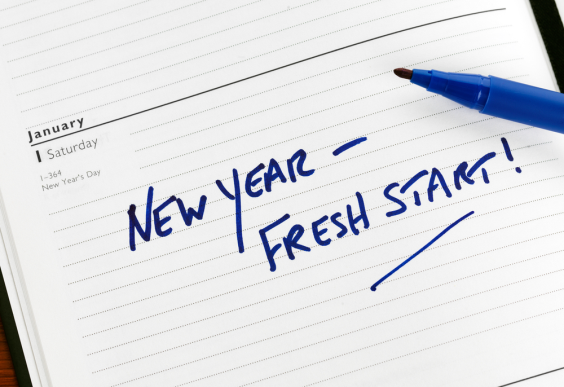 From our swimmers and members:
From our swimmers and members:
“To increase my yardage during my workout by 50 yards a month!”
“To learn how to flip turn well. “I’d like to complete a triathlon; even if it’s a short one!”
“Change my eating habits.”
“Work out 3 times a week...at least!”
“Change my workouts to include swimming.”
“To complete my workout at the beginning of my day!”
Lucy, Jaclyn and I wish you a very blessed and hopeful Happy New Year!
Winter Aquatic Classes:
Adult Technique and Practical Application: We are now offering an Adult Swim Class where swimmers work on their technique, endurance, and master all four swim strokes. Become a part of our group and benefit from a coached workout that encourages you to improve your swim skills! Train for a Master's Swim Meet in 2016 or enjoy an hour of swim with mild guidance. No matter your goals, our class is dynamic and a blast! Classes currently meet on Mondays and Fridays at 9:00am. Call the Front Desk to sign up on the interest list and Jaclyn will call you back!
Parent and Me Fit! Dryland training for our Parent and Me Aqua Class. We are moving inside for the colder months, experiencing a wide range of similar skills that we use in the water: socialization, following directions and fun between parent and child. 4 Months to 4 years! Classes will tentatively meet 10:15 and 10:45, based on interest (we need to have a minimum of 5 to open the timeslot.) Class will be a monthly subscription (Members $50/month; Guests $60/month) Classes will meet 2x week and you can come to as many as you like! (Up to 8 classes per month). Please call Jodi to sign up on the interest list and to choose a time. (805) 239-7397 ext 104.
Swimming Traditions: The Polar Plunge
 The Polar Bear Plunge is an event held during the winter where participants enter a body of water despite the low temperature. In the United States polar bear plunges are usually held to raise money for a charitable organization. In Canada, polar bear swims are usually held on New Year's Day to celebrate the new year.
The Polar Bear Plunge is an event held during the winter where participants enter a body of water despite the low temperature. In the United States polar bear plunges are usually held to raise money for a charitable organization. In Canada, polar bear swims are usually held on New Year's Day to celebrate the new year.
There are several annual Polar Dips in our area:
The Cayucos Polar Bear Dip: 36th Annual Carlin Soule' Memorial Polar Bear Dip
Festivities begin at 9:30am, dip at noon, Cayucos Pier. Young and old participate, some more boisterous than others. Historically, the youngest participant was 3, the oldest 77. A costume contest often draws jubilant cheers from the crowd. Entering the water, at noon, the crowd gathered at the shore’s edge ready to run into the frigid water. And as they do, they are often squeals, screams and smiles as they enter the water.
AVILA BEACH POLAR BEAR PLUNGE: http://www.avilabeachpolarbearplunge.com
Every January 1 Friday, January 1, 2016 at 12:00 PM (noon) folks gather for the Avila Polar Bear Plunge. This year marks the fourth annual Avila Beach Polar Bear Plunge is a celebration of fitness, nature, a New Year, comrade and still having dessert. Dessert can be a cup of coffee or something to eat at one of the local Avila Beach establishments after the plunge. If you are brave, even some cold ice cream can be had locally in Avila Beach!!
TIP of the MONTH: Triathlon Tips
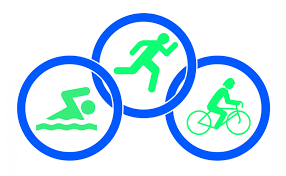 Do you have a triathlon on your bucket list? Always wanted to do one, but didn’t know where to start? At the Paso Robles Sports Club, you can complete your training for triathlon participation. Here are some tips for training:
Do you have a triathlon on your bucket list? Always wanted to do one, but didn’t know where to start? At the Paso Robles Sports Club, you can complete your training for triathlon participation. Here are some tips for training:
1. Go short before going long. The Ironman World Championship event is arguably the most recognizable triathlon event in the world. The award-winning NBC broadcast of this event has brought the struggle and triumph of triathlon to living rooms around the world. However, a 140.6-mile event—2.4 miles of swimming, 112 miles of cycling and 26.2 miles of running—is more than nearly all first-time triathletes should attempt on the first outing in the sport.
Begin with a shorter sprint-distance event (400 to 500 yards of swimming, 11 to 15 miles of cycling and around 3.1 miles of running) or an Olympic-distance event (0.9 miles of swimming, 24.8 miles of cycling and 6.2 miles of running).
2. Stay close to home. For the first race, make it easy on yourself and select an event close to home. If the event is within easy driving distance from your house, it helps reduce race-day stress and hassle. You can also do some of your workouts on the course, increasing your confidence. You can find events close to you by searching the Active event listings.
3. Just a swimsuit and goggles for the swim. If you do not own a wetsuit or are an inexperienced open water swimmer, select an event that is in a pool and does not require a wetsuit. If your event does require a wetsuit, and you don't own one, some retail stores rent wetsuits. A good pair of goggles and a swimsuit made for lap swimming, and sunbathing, is all you need for the swim portion of the event.
4. Your bike is fine. Any bike you're currently riding will work just fine. It can be a road bike, mountain bike or hybrid. Many people have completed their first triathlon on a borrowed bicycle. Be sure the bike is correctly fit to you and is in good working order. (No rotted tires or frayed cables.)
Most races have a support motor vehicle (also known as sag support) following the race to pick up riders unable to complete the bike leg for one reason or another, but it is best that you know how to change a flat tire for training and race day.
5. You need running shoes. If you do not currently own a pair of running shoes, you need a pair. I recommend going to a good running store near you and let the experts in the store help you select the right pair of running shoes. They should ask you questions about your feet, running history and watch your gait while walking and running.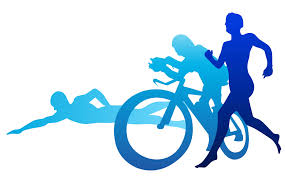 6. It doesn't take as much training as you might think. You are not training for a podium position at an Ironman event for your first race, therefore you do not need to be training 20 to 30 hours per week. You can be ready for a sprint-distance race on less than five hours per week of training. Most weeks are less than five hours. You can find detailed training plans online.
6. It doesn't take as much training as you might think. You are not training for a podium position at an Ironman event for your first race, therefore you do not need to be training 20 to 30 hours per week. You can be ready for a sprint-distance race on less than five hours per week of training. Most weeks are less than five hours. You can find detailed training plans online.
7. Plan to rest. For most eager racers, it is easy to plan to swim, bike and run. Be certain you plan to rest as well. You want to do enough training to complete the event and have fun. It is best if you finish the event with a smile and hungry for more races.
8. Transition time counts too. I have had some beginner triathletes write to tell me they were surprised that the time it takes to change from swimming to cycling and from cycling to running (known as transitions, "T1" and "T2") counted in overall race time. All of the time between the start of your swim and when you cross the finish line at the end of the run counts. Practice smooth and swift transitions.
9. Plan to do the first half of the race slower. Most beginners start too fast. Estimate how much time you think it will take you to do the entire event. Plan to do the first half of that total time at a slower pace than you think you're capable of doing. When you reach the halfway point, you can pick up the pace and finish strong. This is called a negative-split effort.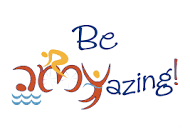 10. One piece of "trick" equipment. If you want to pick up one piece of "trick" equipment, purchase elastic shoe laces. One such brand is Yankz. Elastic laces allow you to slip your feet into your running shoes and eliminate the need to tie your shoes.
10. One piece of "trick" equipment. If you want to pick up one piece of "trick" equipment, purchase elastic shoe laces. One such brand is Yankz. Elastic laces allow you to slip your feet into your running shoes and eliminate the need to tie your shoes.
For your first race, try to keep things simple. Once you get hooked on the sport, you can look into ways to get faster or go longer. When you do your first triathlon, ask for help around the club! Whether you need encouragement or accountability, our trainers and coaches would be so pleased to help you achieve your goal! Be sure to let us know when your event is so we can support you, and keep us posted on how it goes!
Tennis Tips: Take Your Game to the Next Level
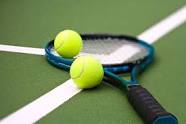 Practice with a purpose
Practice with a purpose
One of the greatest tennis tips is to practice with a purpose. No matter how much time you have to practice or what your goals are, it’s always important to practice with a purpose. As a tennis beginner, you are likely still learning the ropes of the game. The brain simply has a lot of new information to process, and it will take time for these new concepts to fully sink in. The tennis tips for beginners will require a lot of practice and hard work.
There are no shortcuts to learn how to play tennis, but instead it will require dedication and focused practice. By practicing with a purpose every time you go out on the court, not only will your mind and body become more productive, you will be able to set goals for yourself and compare your performance according to your own personal benchmarks.
This is critical because many tennis beginners go out on the tennis court and hit tennis balls with no rhyme or reason. There may be many errors and mistakes, but they do not learn from them, therefore they continue to make the same mistakes and it then becomes a habit. Mistakes alone are not harmful, but what is harmful is failing to learn from your mistakes. Over time, these repeated mistakes will result in deepening the bad habit into muscle memory, making these bad habits even more difficult to erase in the future. The old saying is, “An old dog can’t learn new tricks,” and there is some truth to that statement. The best tennis tip I can provide to a beginner is to practice with a purpose from day 1, and this will immediately have a positive impact on your future results whatever you goal in tennis may be.
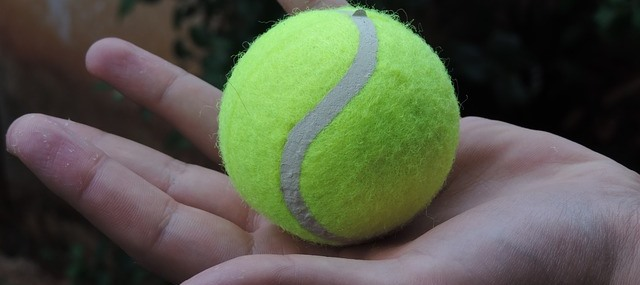 Journal with Tennis Tips
Journal with Tennis Tips
Keep a journal or log of your efforts and performance on the tennis court. This can be in the form of a personal diary or workout book. Keep track of your tennis by making periodic entries into your journal.
For example, write down what your tennis coach tells you and what you need to fix. If your tennis forehand technique needs the most work, write that down along with possible tennis tips or learning aids. Or if your tennis backhand is your weakness, perhaps you should take note of that in your journal and then also take note of some verbal cues or mental visualizations to help that backhand. As another example, if you’re not bending your knees enough on your serve, or you drop your tossing arm prematurely then jot that down into your workbook and follow it up with some advice and solutions to that problem, so you can learn from this and hopefully make efforts to fix these problems on the practice court the next time.
This is especially important and can be a great guide to your future successes. When I was a tennis beginner, I would keep a journal just like the one I described. Since I was not able to afford tennis lessons from a coach for more than once per week, I knew I needed to make every session very productive. I started to keep a workbook and I would log my day to day tennis progress inside my journal. I would write how I felt that day, what type of fitness or running I did, ongoing problems with my tennis technique and small fixes I needed to make on the forehand, backhand and serve. I also made note of any particular milestones I made with my tennis strokes. In addition, I would write down the tennis tips I received from my tennis coach or any tennis instruction I found helpful around me. These tennis tips for beginners will be an invaluable resource.
Eventually, my tennis journal began to pile up with entries and it was a virtual log book of tennis tips for beginners. Whenever I needed to reference a tennis tip for beginner, I would always look back and view my tennis journal as an encyclopedia. The journal turned out to be a perfect resource for me and it helped fuel my limited practice sessions on court with a tennis coach.
Take Step by Step Progressions
These are extremely important if he or she wishes to advance to play better tennis. As a tennis beginner, it is important to take step by step progressions on any new concept. Think of it as planting a foundation, and then adding building blocks to each new level. The foundation will be your tennis technique, tennis footwork, tennis strategy and mental tennis. Each of these areas must be learned to in order to improve, but a tennis beginner must learn these areas starting from the basic concepts.
As soon as you master the basic concepts of each of the above areas, then you may progress to more advanced elements. Don’t add chocolate and vanilla until you have the plain vanilla. For example, on the tennis forehand a player must learn the basic elements of the tennis stroke – getting sideways, stepping in and completing a full follow through before they can learn the advanced elements of the pros.
Be prepared for adversity
Learning the game of tennis is a time consuming process with no one way escalator. It will take lots of practice time to fix the various bad habits as well as the tennis technique; these issues can take a large amount of time before they can be mastered. It’s best to learn the correct technique from the first day and seek advice from a knowledgeable tennis coach so that person can direct you to the correct methods sooner, before you develop any poor habits that can restrain your progress in the long run.
The Learning Process
View mistakes as part of the learning process of tennis rather than become frustrated or avoidant over the mistakes. Mistakes are results that tell you that there is additional practice needed. As a tennis player, you will make many mistakes, but learn to embrace your mistakes as they are simply feedback as to what you are doing incorrectly. Tennis players that avoid making mistakes will never learn to fix them and gain the valuable experience learned from making the mistakes.
Be less judgmental about mistakes and rather than fret over your mistakes, seek a solution. If a particular tennis stroke is giving you trouble, look for solutions to the problem. Once you are aware of your mistakes, be certain to work to fix these mistakes on the tennis court. Whether these mistakes are in your tennis technique, tennis footwork, strategy or in your mental game be sure to become aware of your mistakes and work on never making repeated mistakes.
This tennis tip is possibly the most important of all. Mistakes can only be corrected through the correct mentality and is a part of the game of tennis and life. There is no better teacher than your own mistakes and lessons learned from the mistakes made. Once you learn from your mistakes, work on improving them and eventually never make them again.
Vamosssssssssss!!!!!!!!! Hit the courts right now!!
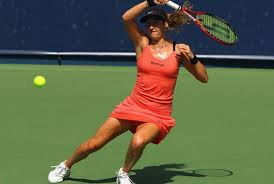 What To Do In 2016??
What To Do In 2016??
As we make our New Year resolutions to ourselves and our families, I thought it might be fun again to give ourselves our top tennis resolutions for 2016.
In the New Year I resolve to work harder on my footwork. I'm gonna' figure out what a split-step is to help me get a jump on that ball and get better prepared to pummel it back in my opponent's direction. I know it isn’t the coolest way to work on my game, but I truly know that the easiest and the fastest way to get better at this game is to have better footwork.
I resolve to spend more time on practicing my serve and especially my return of serve. ‘Cause I know those are the two most important shots in tennis and if I don’t get my serve in and my return back consistently, it doesn’t matter how good my other strokes are ‘cause I’ll never get a chance to hit ‘em very often, and I certainly won't get a chance to start the point in my favor.
I really know that at the club level good tennis is about reducing errors, not hitting winners, so I’m going to adopt the “Refuse to Miss” attitude on the court. I resolve to reduce my errors by making sure I clear the net by a good margin with good spin, hit the ball away from the lines, and whenever possible I’m going to hit the ball x-court over a lower net, a longer court and knowing I get to recover to a closer position from where I just hit the ball.
I know I’ve been trying to groove my baseline ground strokes for months, years (decades?), but I will resolve to work on my transition game/approach shots and get to the net more, especially in doubles, ‘cause I know it’s more fun up there and that’s where the doubles points are really won.
I resolve to think more out on the court. I'm gonna' have a usable strategy against my opponents and take them out of their game and take advantage of their weaknesses by making them hit shots they don’t want to hit.
I resolve to take myself out of my “comfort zone” level of tennis and into the “learning zone”. Maybe I'll take some lessons and attend more clinics this year so I can learn new skills, shots and understand strategies to help me enjoy this great game even more.
I know a lot of my enjoyment from tennis comes from it being a hard game and I love the challenges it presents. But it can be frustrating too! So this year I resolve to have more fun out there while I’m playing, enjoy the competition more and don’t take either my wins or my losses too seriously.
I wish all of you and your families a great 2016! See you on the courts. Gary
Fitness Corner with Dr. Andre Acebo
 Chiropractor and strength Coach
Chiropractor and strength Coach
PRSC Fitness Director
This month's article is from Jonny Bowden Ph.D. "The 9 habits of highly healthy people".
1. Eat Your vegetables. No kidding. And I'm talking at least 9 servings a day. Unless you're following the most stringent first stage of the Atkins Diet, you should be able to consume 60-120 grams of carbohydrates a day (depending on your weight and exercise level), and you'd have to eat a stockyard full of spinach to get to that amount. Every major study of long-lived, healthy people shows that they eat a ton of plant foods. Nothing delivers antioxidants, fiber, flavonoids, indoles, and the entire pharamacopia of disease fighting phytochemicals like stuff that grows.
2. Eat fish and/or take fish oil. The Omega-3's found in cold-water fish like salmon deserve the title of "wellness molecule of the century." They lower the risk of heart disease, they lower blood pressure, they improve mood and if you’re pregnant, they may make your kid smarter!
3. Connect. And I'm not talking about the internet. In virtually every study of people who are healthy and happy into their 9th and 10th decade, social connections are one of the "prime movers" in their life. Whether church, family, volunteer work or community, finding something you care about that's bigger than you that you can connect with and that involves other people (or animals) will extend your life, increase your energy, and make you happier. Only always.
4. Get some sun. At least 10-15 minutes three times a week. Interestingly, a recent study of four places in the globe where people lived the longest and were the healthiest noted that all four places were sunny climates. Sun improves your mood and boosts levels of cancer-fighting, performance-enhancing, bone-strengthening vitamin D, a vitamin most people don't get nearly enough of.
5. Sleep Well. If you're low in energy, gaining weight, grumpy and looking haggard, guess what?- chances are you're not sleeping nearly long enough nor well enough. By sleeping "well, I mean uninterrupted sleep, in the dark, without the television on, in a relaxing environment. Nothing nourishes, replenishes and restarts the system like 7-9 hours sleep. Hint: start by going to bed an hour early. And if you've got a computer in the bedroom, banish it.
6. Exercise every day. Forget this 20 minutes three times a week stuff. Long lived people are doing things like farm chores at 4:30 in the morning! Our Paleolithic ancestors traveled an average of 20 miles per day. Our bodies were designed to move on a regular basis. New studies show that merely 30 minutes a day of walking not only reduces the risk of most serious diseases, but can even grow new brain cells!
7. Practice Gratitude. By making a list of things you're grateful for, you focus the brain on positive energy. Gratitude is incompatible with anger and stress. Practice using your under-utilized "right brain" and spread some love. Focusing on what you're grateful for- even for five minutes a day- has the added benefit of being one of the best stress-reduction techniques on the planet.
8. Drink red wine or eat grapes. The resveratol in dark grapes is being studied for its effect on extending life, which seems to do for almost every species studies. (So does eating about 1/3 less food, by the way.) If you've got a problem with alcohol, you can get resveratrol from grapes, peanuts or supplements. (And if you're a woman, and you choose the alcohol option, make sure you're getting folic acid every day.)
9. Get the sugar out. The number one enemy of vitality, health and longevity is not fat, it's sugar. Sugar's effect on hormones, moods, immunity, weight and possibly even cancer cells is enormous, and it's all negative. To the extent that you can remove it from your diet, you will be adding years to your life and life to your years.
Finding the balance in life is important for living long & healthy. It’s not just about training and diets either, so doing just come and workout. Go outside and play some tennis or basketball, get in the pool and get some sun. And have a glass of wine and connect with friends at YOUR Paso Sports Club.
All of our staff is here to help.
"Happy New YOU"
Doc

